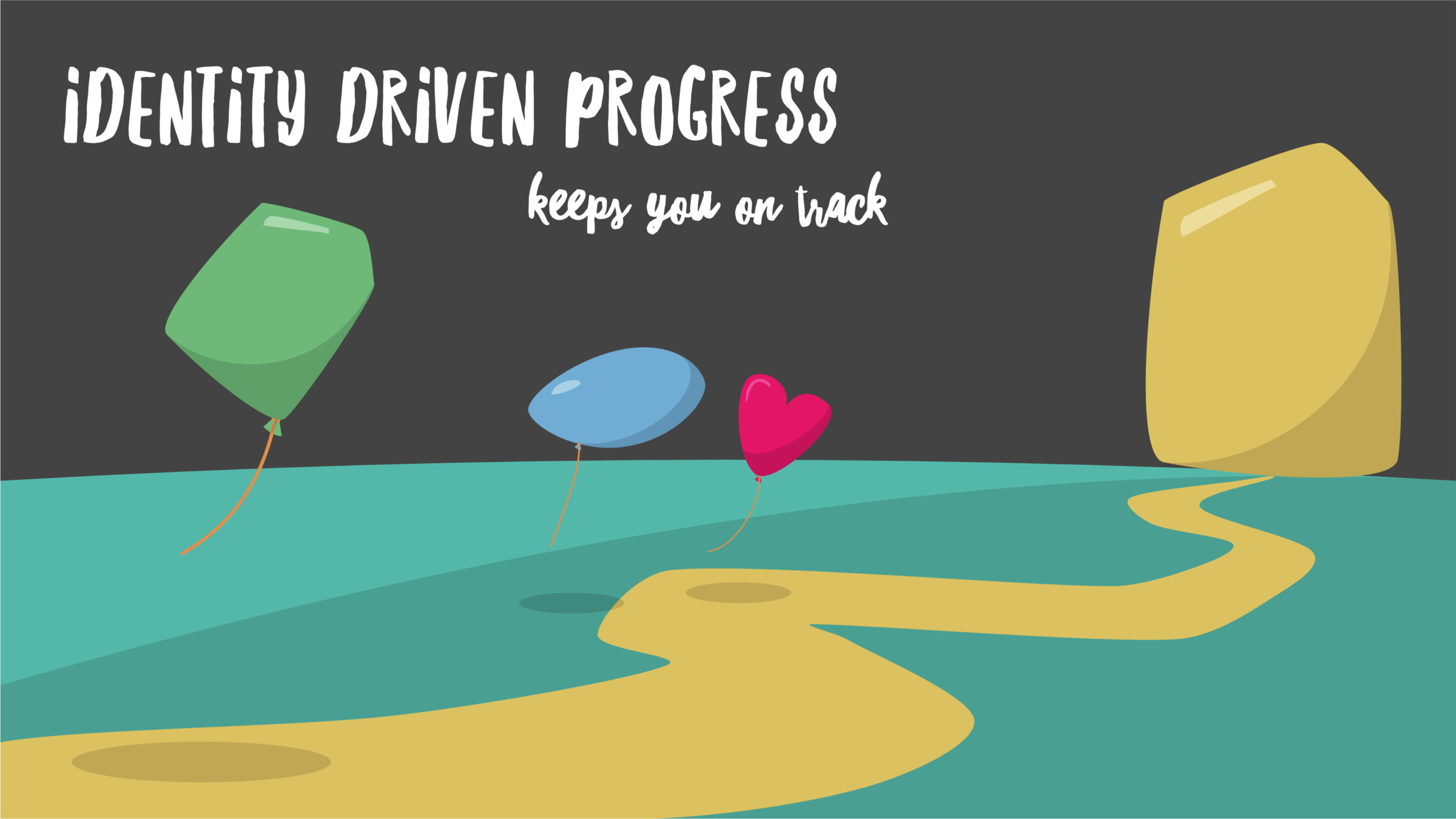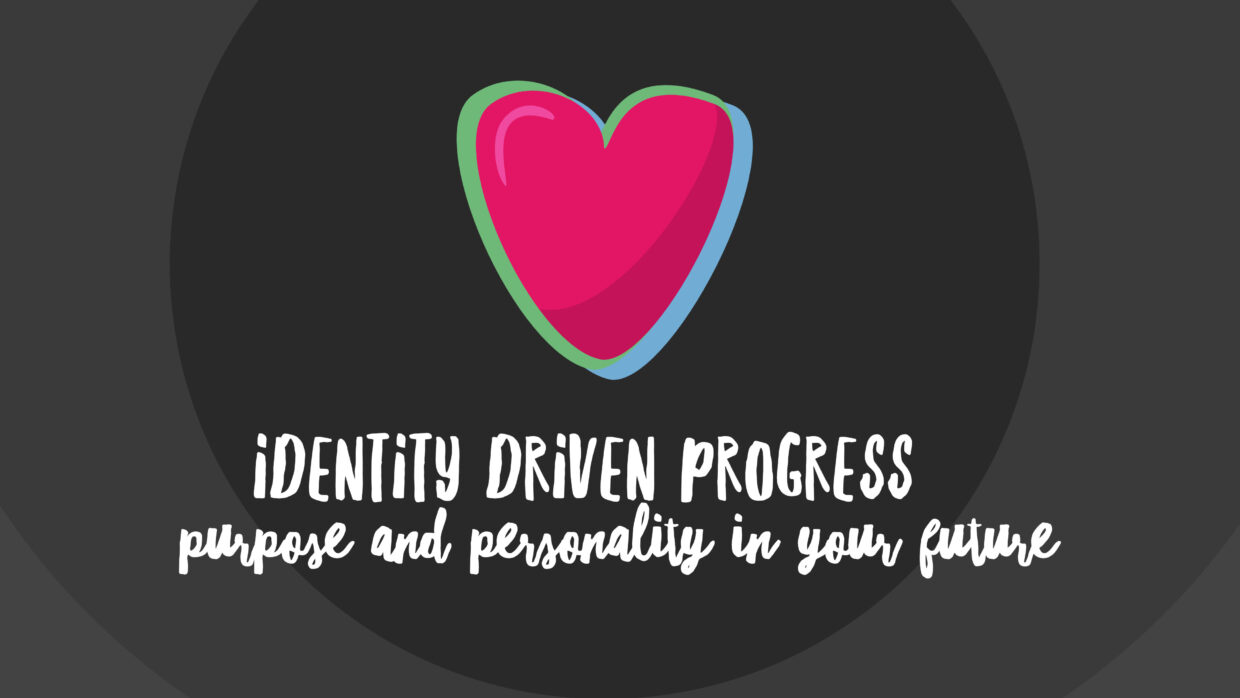People and organisations seem to make poor, overly rational and most of all defensive decisions about their future. Identity Driven Progress is a tool to leverage your (corporate) identity in tech, innovation, design to gain focus and make great decisions, even if they turn our differently. The following story will explain why, what and how.
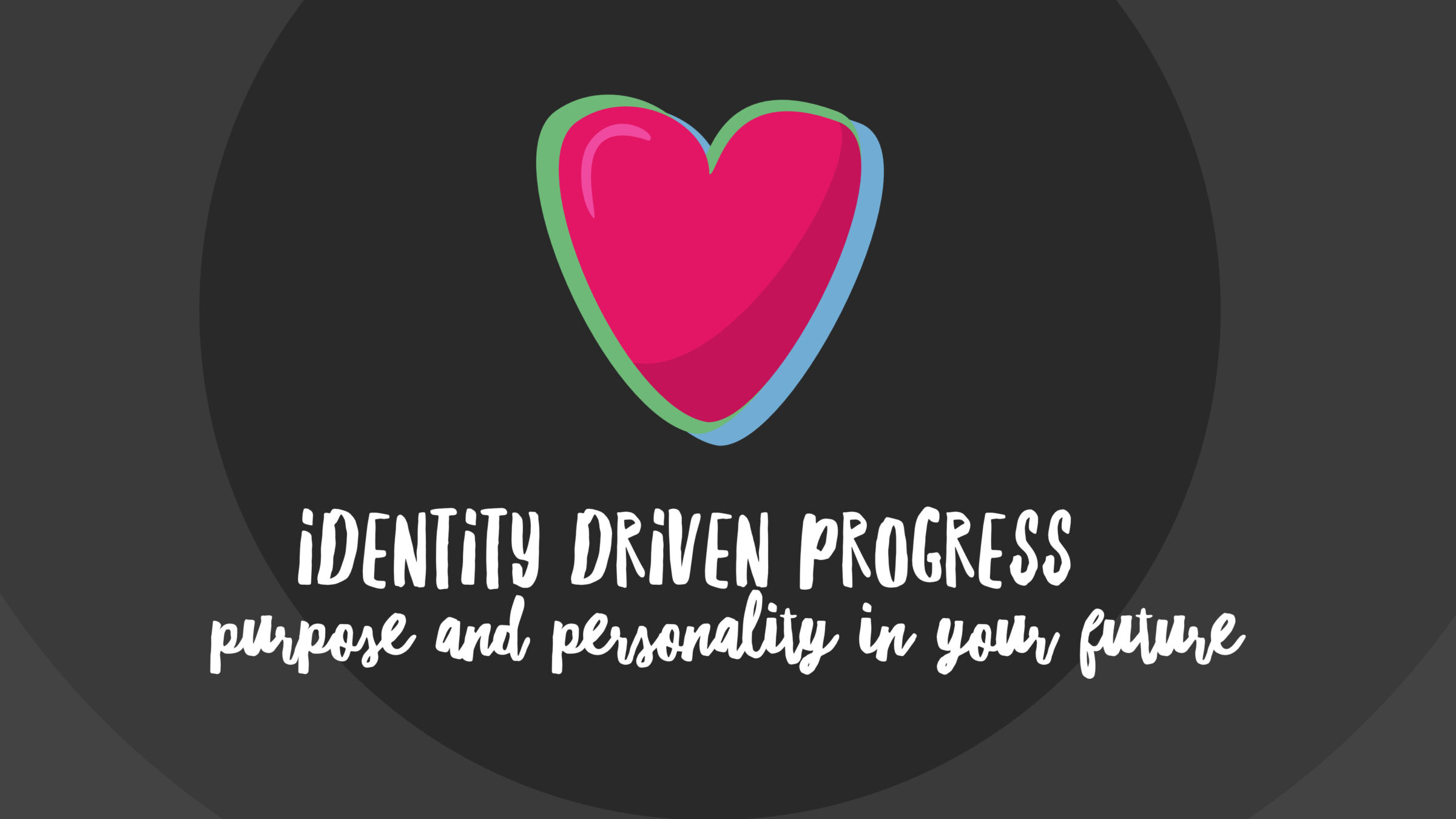
This is a short presentation I give before we enter a strategic design, or innovation driven process. To be frank: Identity Driven Progress could be best described as a great tool to make decisions you believe in and can stand behind now, and in the future. It strengthens accountability, makes tough decisions easier and creates long lasting clarity.
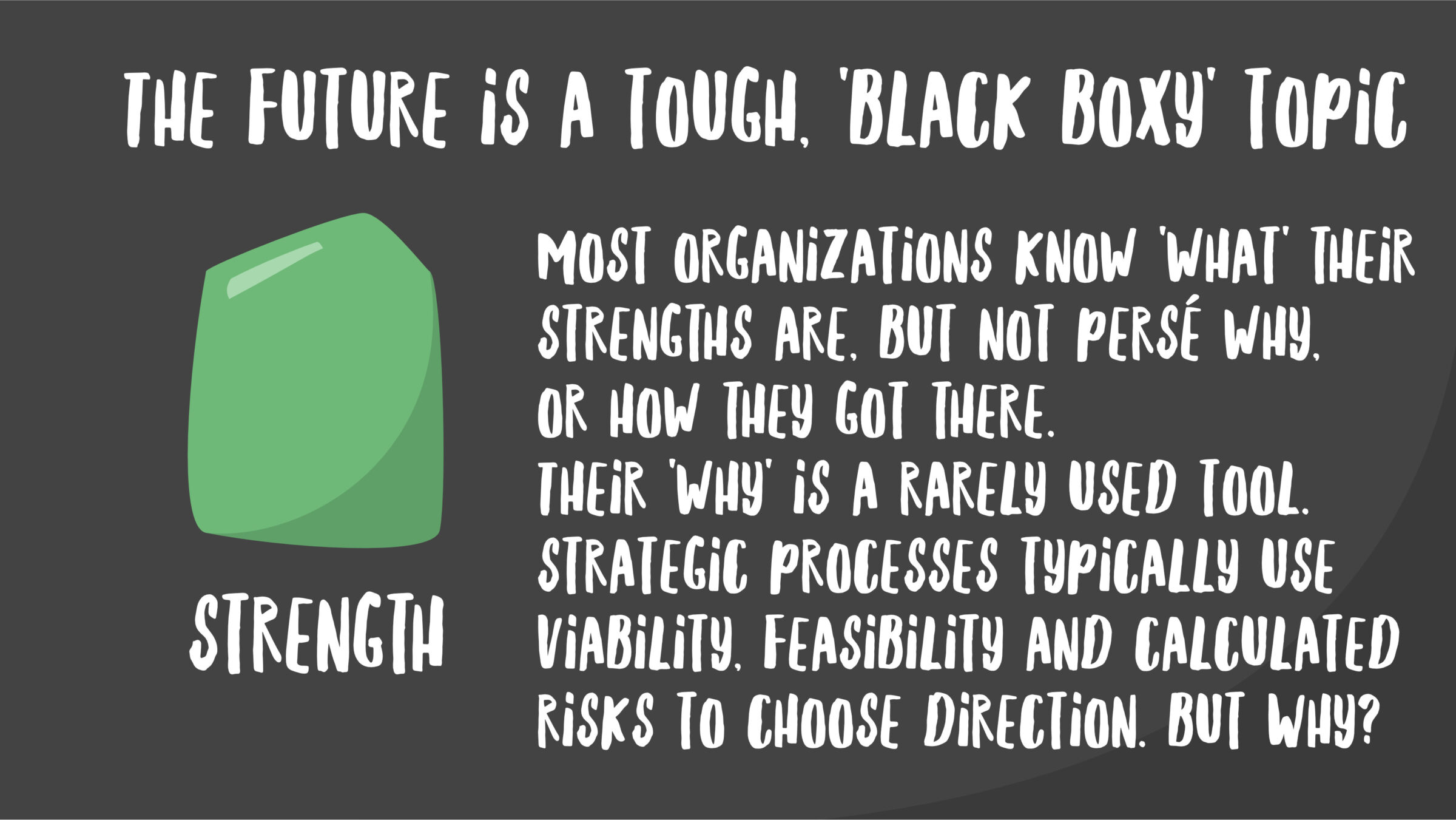
I have to be honest, the processes of viability is a gamble at best. I’ve used models in both design, and innovation to find a future that’s a sure thing, but in most cases work like a mental crutch, rather than a strong tool. Don’t get me wrong, if done thoroughly and with your future collaborators and customers, it might yield a great predictor, but commitment and consistency in making choices count for an equal amount.
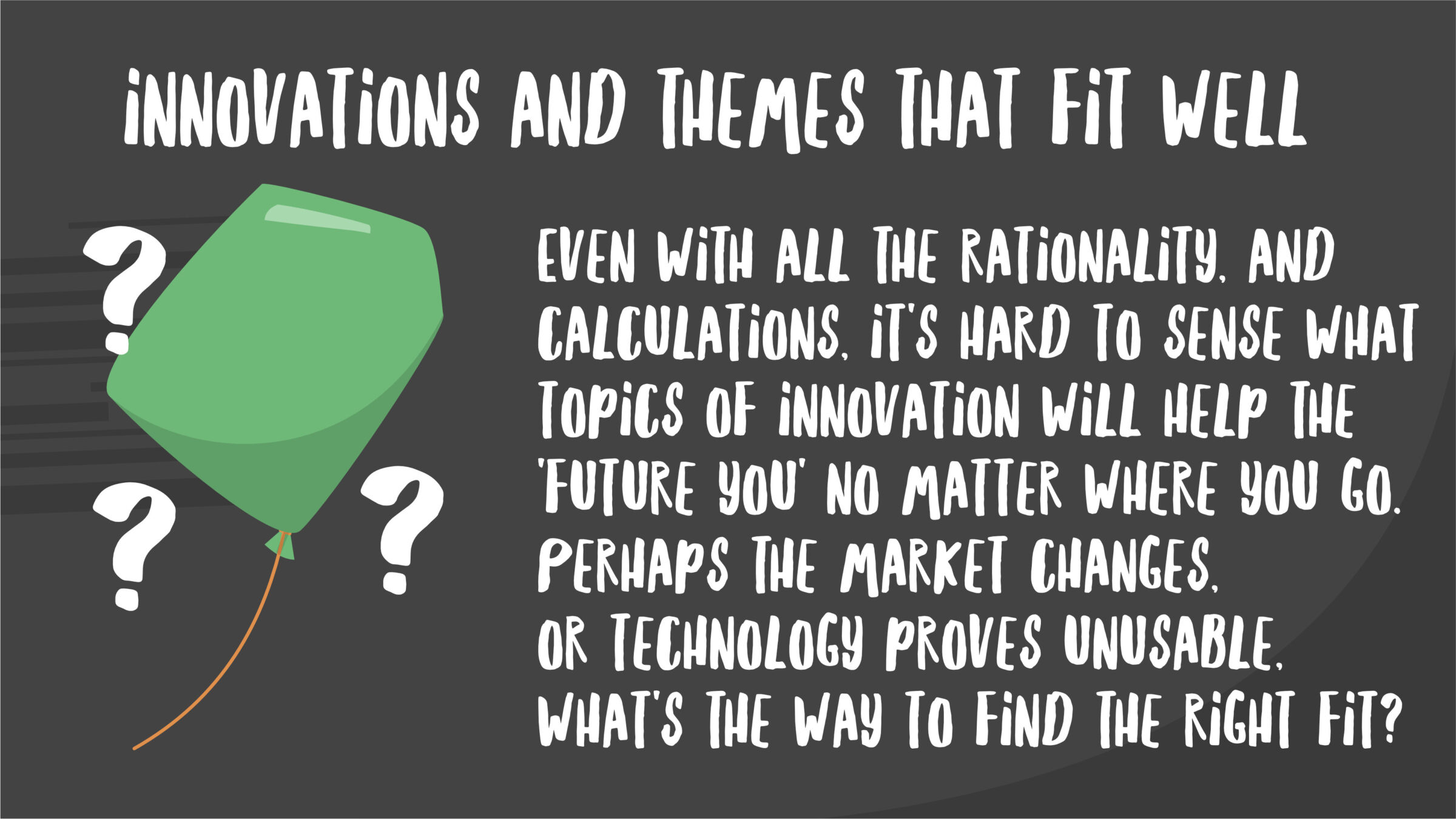
Rationality in most cases are an emotional reaction to uncertainty It’s okay to be uncertain, but if you really want to know what happens in the future, you need to take steps to create that future for yourself, or follow people you believe in. In either case, it’s wise to know your own desires before you commit to somebody else’s. You need a vision.
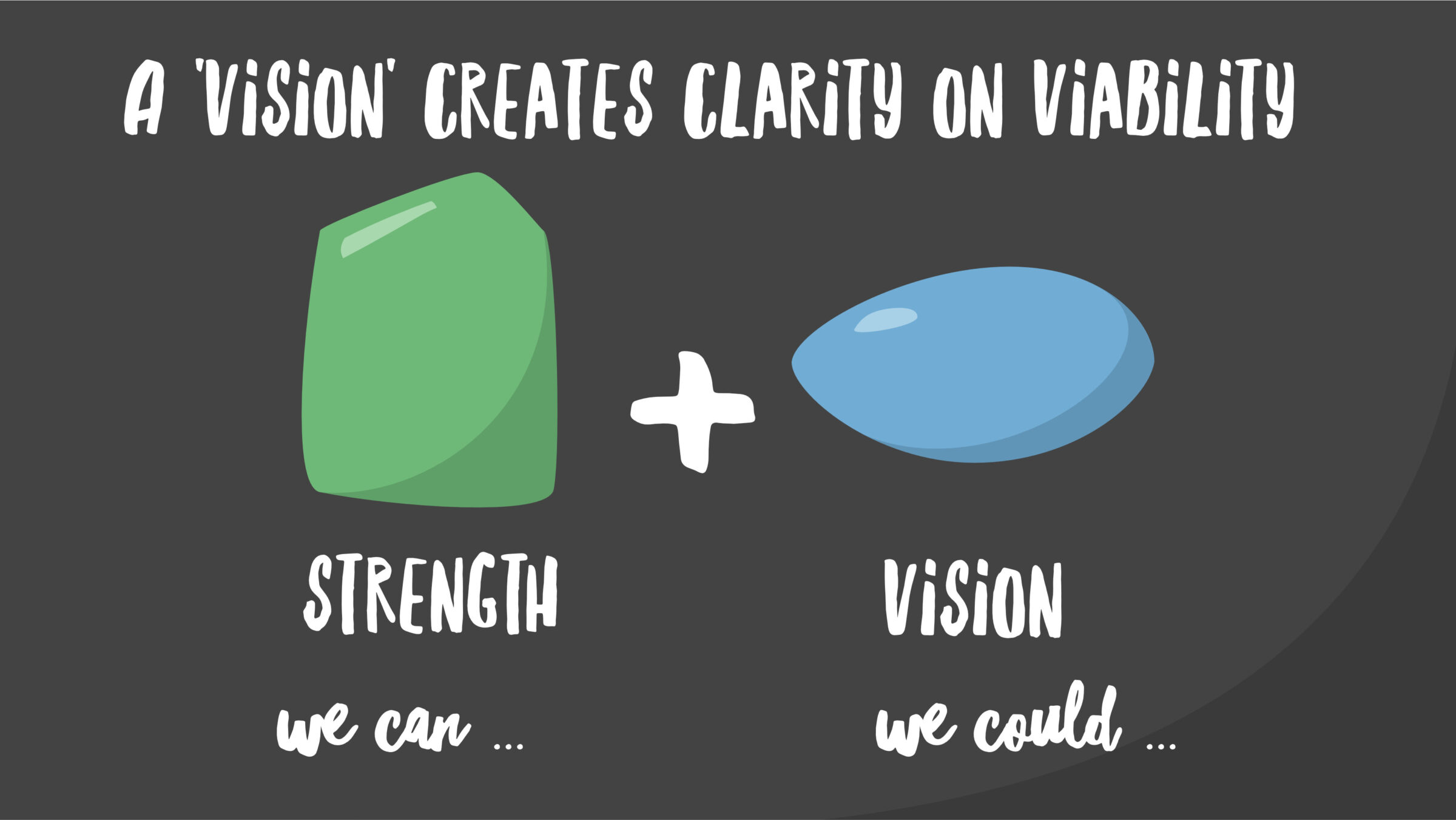
So you got two sure things to make your future, or progression a bit more clear. You know things you can do now, it’s why your are successful now, or how you got where you are now. It’s when you say “We can …”, you can do it straight away. But most futures are about a changed world, and a changed you. That’s where vision is about: from this point and with these skills and strengths, where could we go? The vision is things you could do, but don’t do now, because of limitations of your current situation like time, capabilities, resources, culture and uncertainty of success.
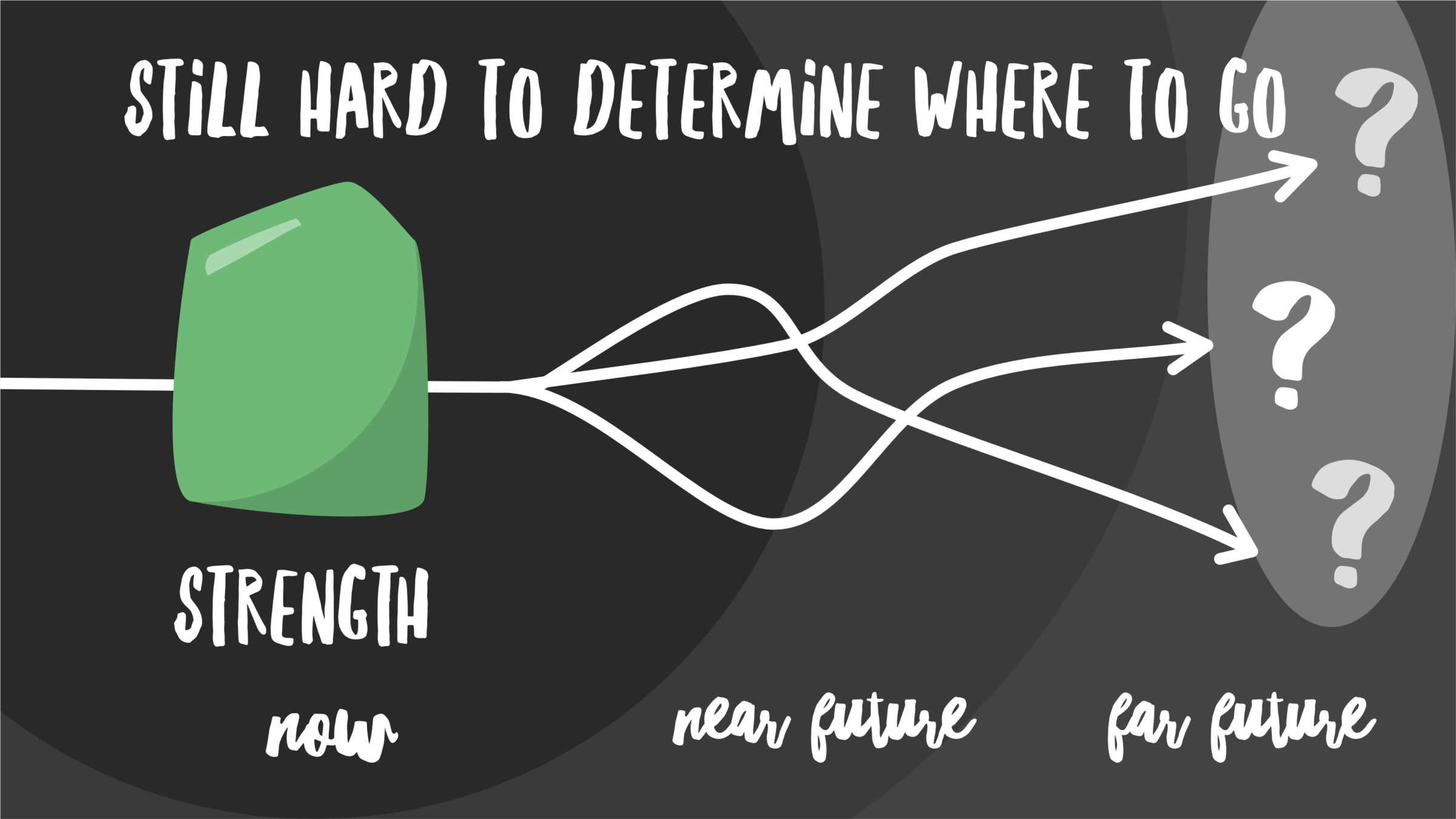
So we need to create some more certainty. To do so we have all kinds of practices to see what possible futures might be, like back casting where you portray a desirable future and see what possible journey you need to make to get there. Here you can see an example of the futures cone, or cone of posibility, where you can choose what possible, plausible, probable and preferable futures there might be. All these exersices have the risk of looking at the future as one expressed in mostly tech and change in other pace layers (flying cars, quantum computing and basic income). They don’t talk about you until you’ll say: that future looks pretty neat. But it’s not your future AND it’s a rather flat future, defined by valuable, but also limited outcomes like innovation in a vacuum, economic gain and idealism.
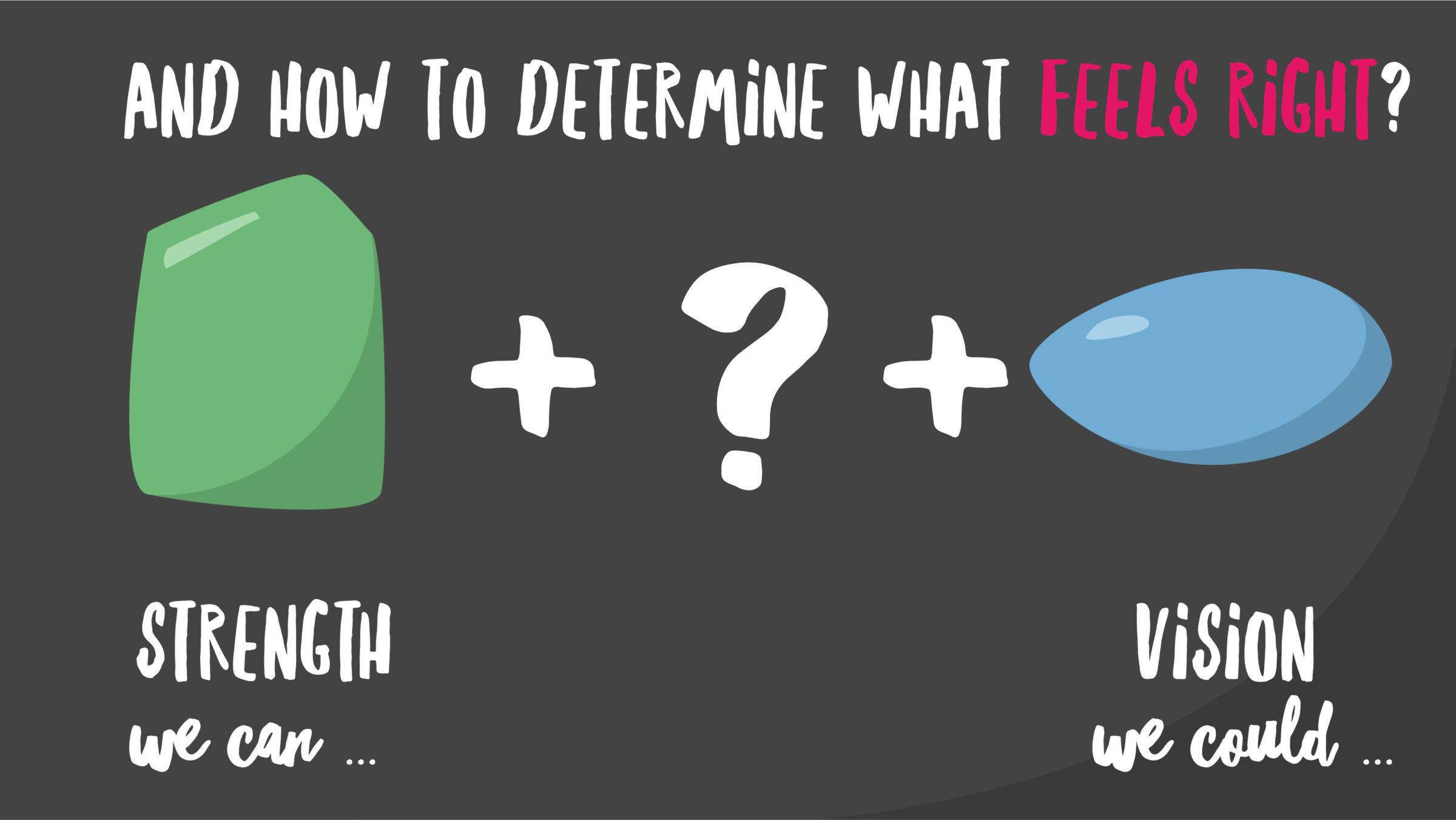
So given you have clarity on what you ‘can do’ and what you ‘could do’/ where you ‘could go’, you create a huge set of possibilities. Mostly these possibilities are created by outward influences, like robots taking over mediocre tasks, economic change, commoditisation of technology, different acting markets and different ecosystems to operate in. That’s a huge mountain to make sense of.
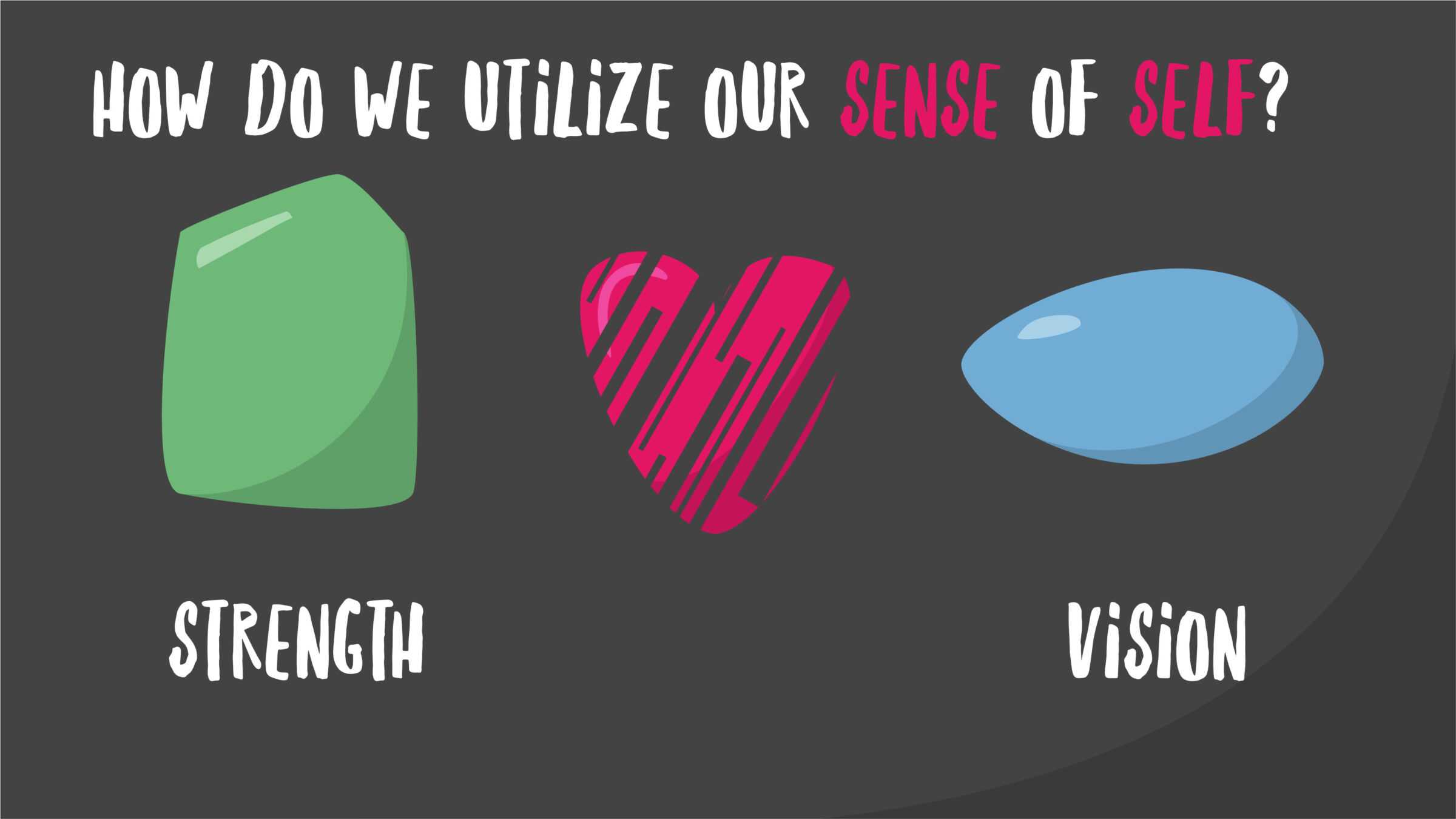
What most people do is choose arbitrary, or chose by comity, chance and gut feeling. That works in the short term, because it feels good! And to be frank: choosing with your gut might even be spot on, because deep down you might be curious, have a believe, or find the possible outcome desirable. But, soon you’ll start to doubt, your choice is not easily explained and you and others will second guess your choice. What you did was personal, typically you … you choose from your identity. A typical ‘you choice’.
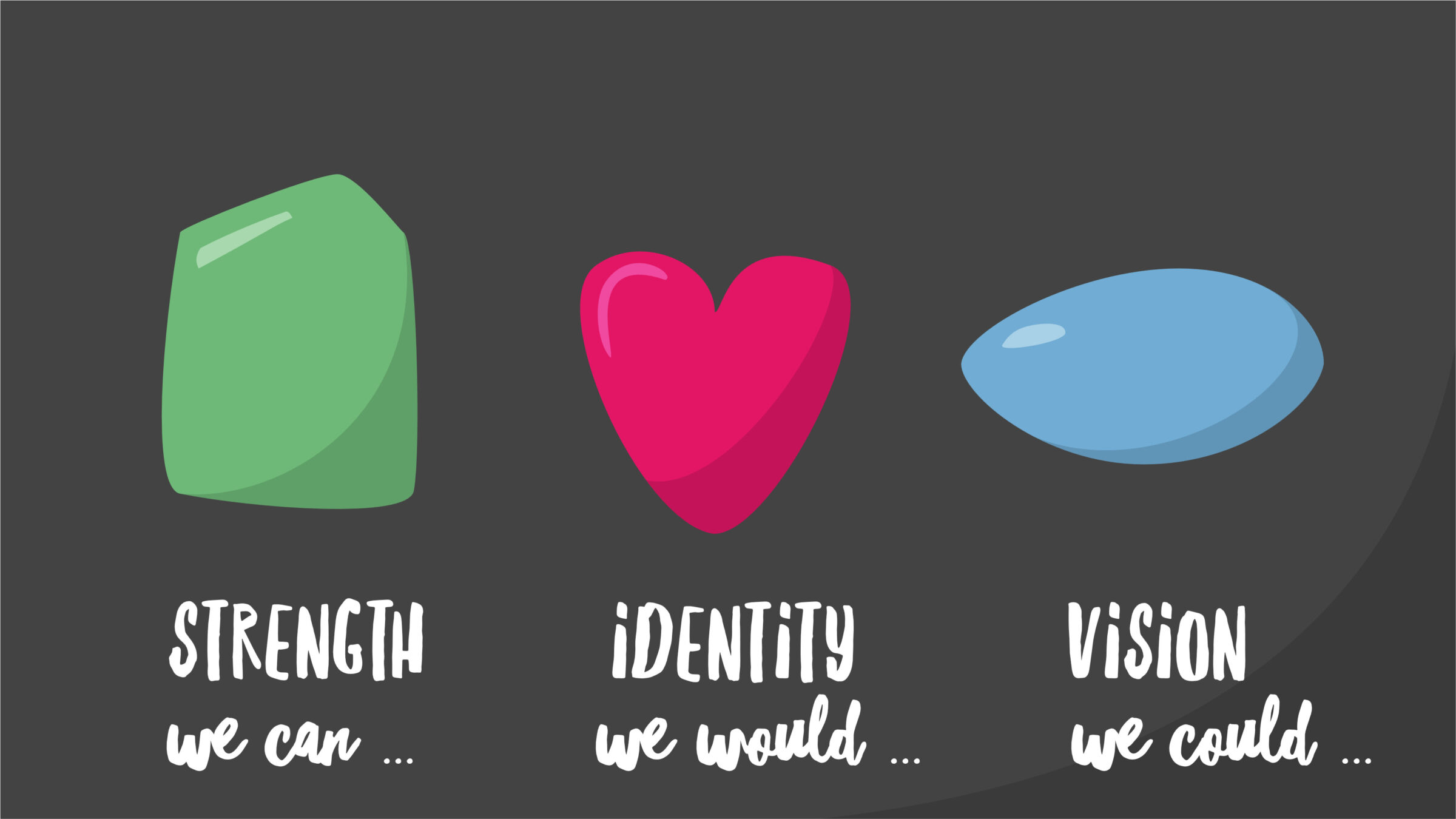
Now we have an extra super power to whittle down our first choice to progress. I say first, because the long list of possible futures and possible routes to get there might be interesting and viable, so we’ll keep them. What we’re after is: what do we do first. We know what ‘we can’ do, we devised what ‘we could’ do, let’s talk about what ‘we should’ do. I’d say, it’s our gut instinct, first reaction, coupled with your identity that’s also visible from the outside. It’s predictable, because people kind of know you.
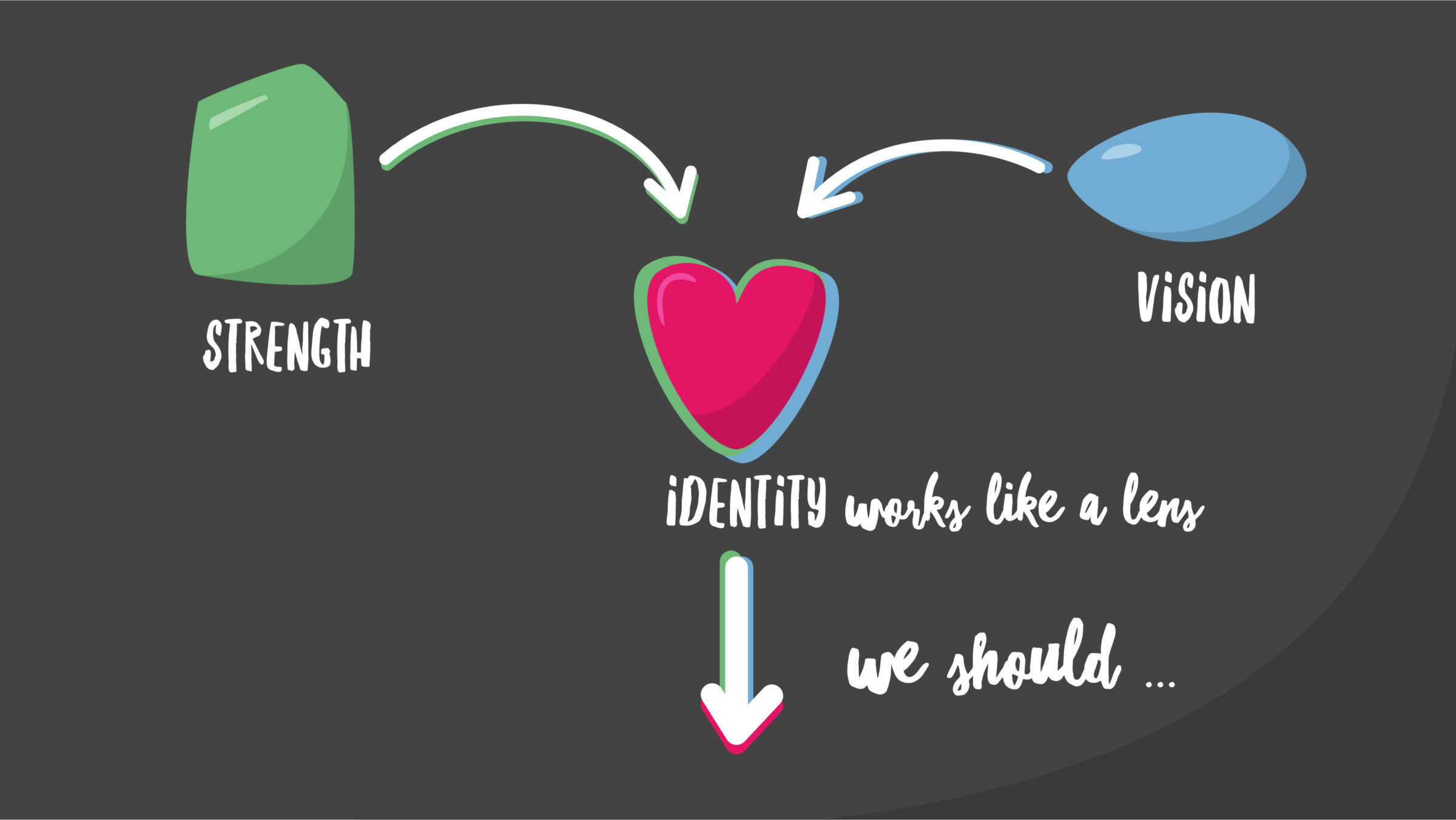
In the life of a person this ‘identity’ would truly be your nature, your history, your fitness and emotions that determine, or make predictable what you ‘would do’. It’s a lens that discards all nonsensical options, all things beyond your control and all things that doesn’t fit your values, personality and voice.
So in a company we’re looking for that thing that shows identity. Something that articulates your values, believes and voice. Funnily enough there mostly is a document like that most of the time. It’s a business plan where you talk about things that are important to you. A better document is a public company strategy and identity: how you project yourself towards your customers, partners and employees. Those are values that are both known, but also shared.
A strategy and company identity are in some sense the tools for accountability towards the outside world. Given that your identity and strategy align with how you do business (and it’s not a front to hide ugliness) you could also use them to make smart desisions right? So what do you need? What does an identity look like?
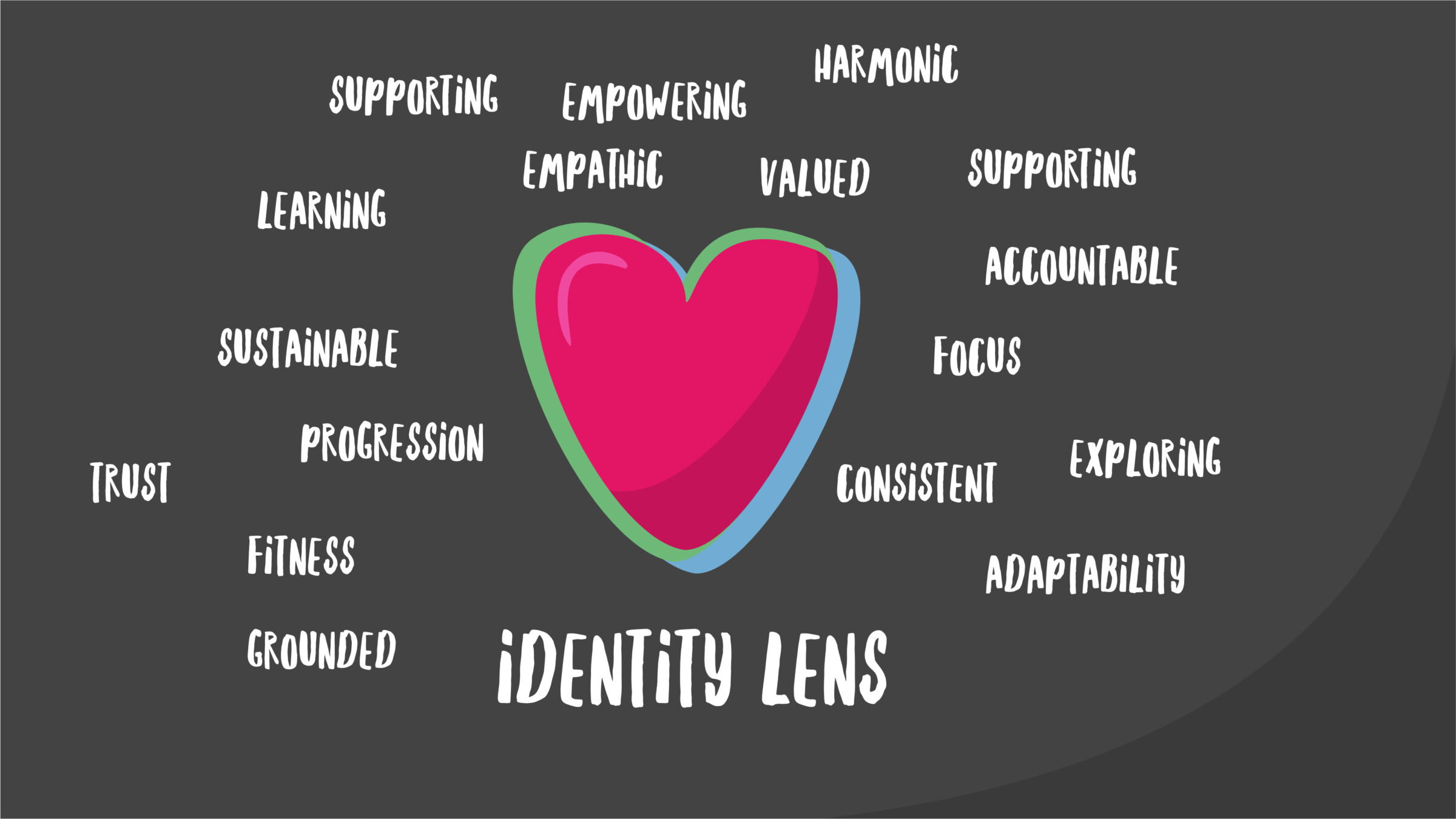
Most of the time your personality are two things: values and traits, so things you hold dear (values) and ways you tend to act (personality). The values in your identity are most of the time shared among personnel, they are values you share. Although they might be a bit vague, they still matter and are great touch stones to discuss choices and even whether you still hold these values to be true. Values are in most cases very personal, but also don’t really change, although some people think that a shared culture might also be an expression of values.
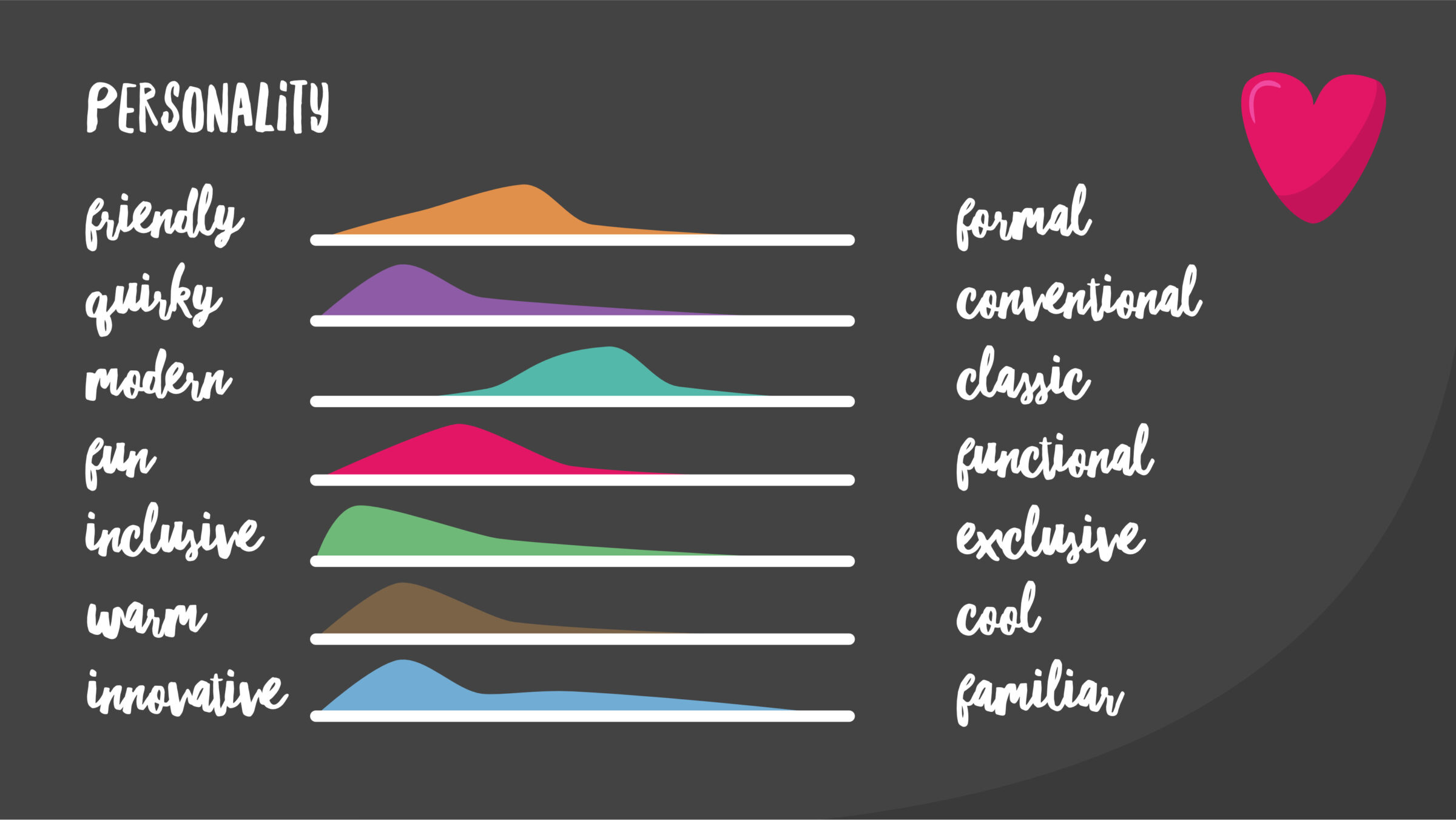
So, we’re talking implicitly about your shared personality: how you want to present yourself to the world. Most of the time it’s a reflection of your organisation and the people you employ. Like a game character you can also code your own personality. Up until now it helps copy writers and creators to create great content, but it might help you too to convey how you make/ made choices. If the outcome of a choice doesn’t gel with your personality, you might want to investigate, or even drop it all together.
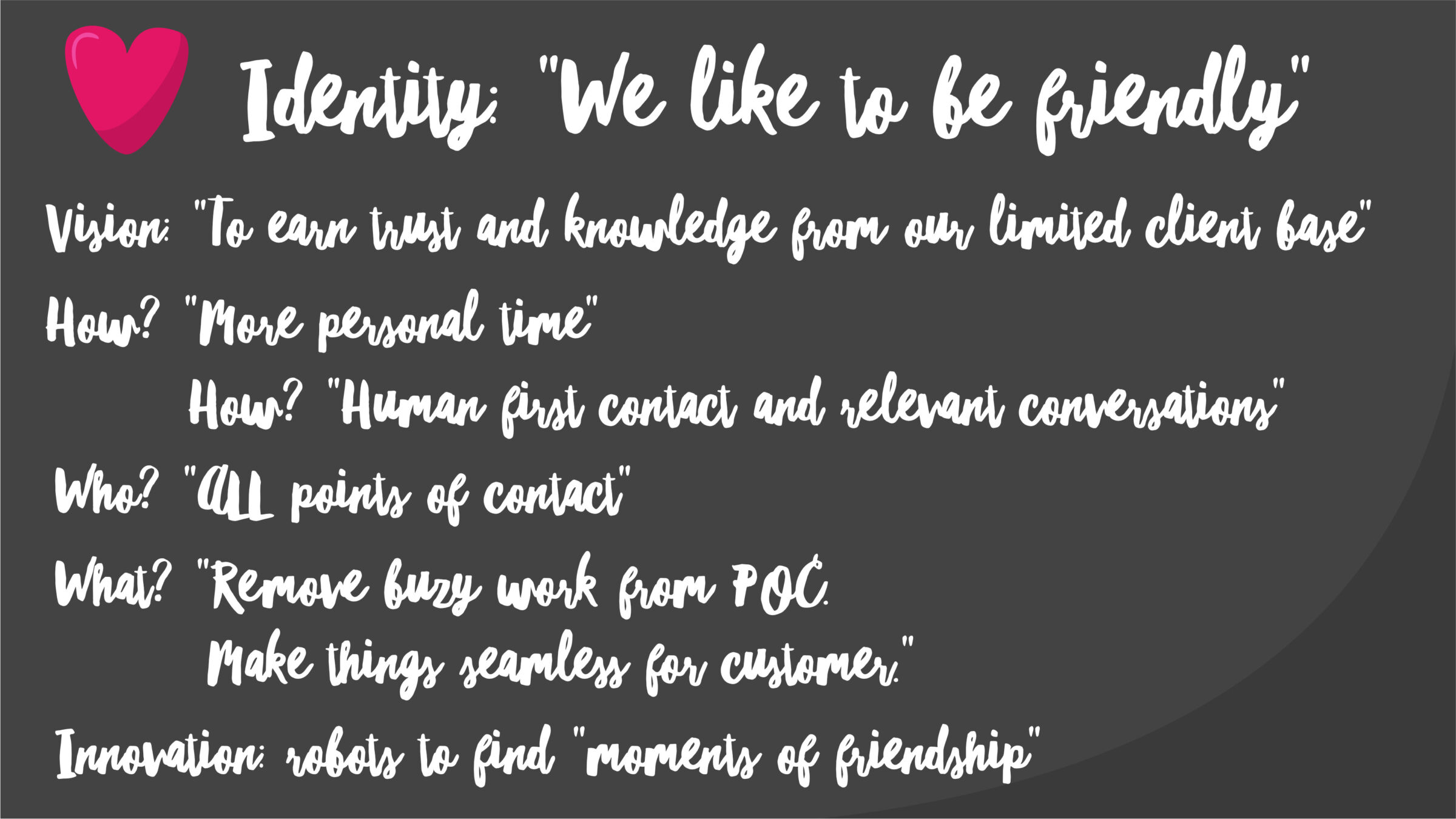
Such an identity could be a little story how you like to help your customers, like the little part of a service promise above.
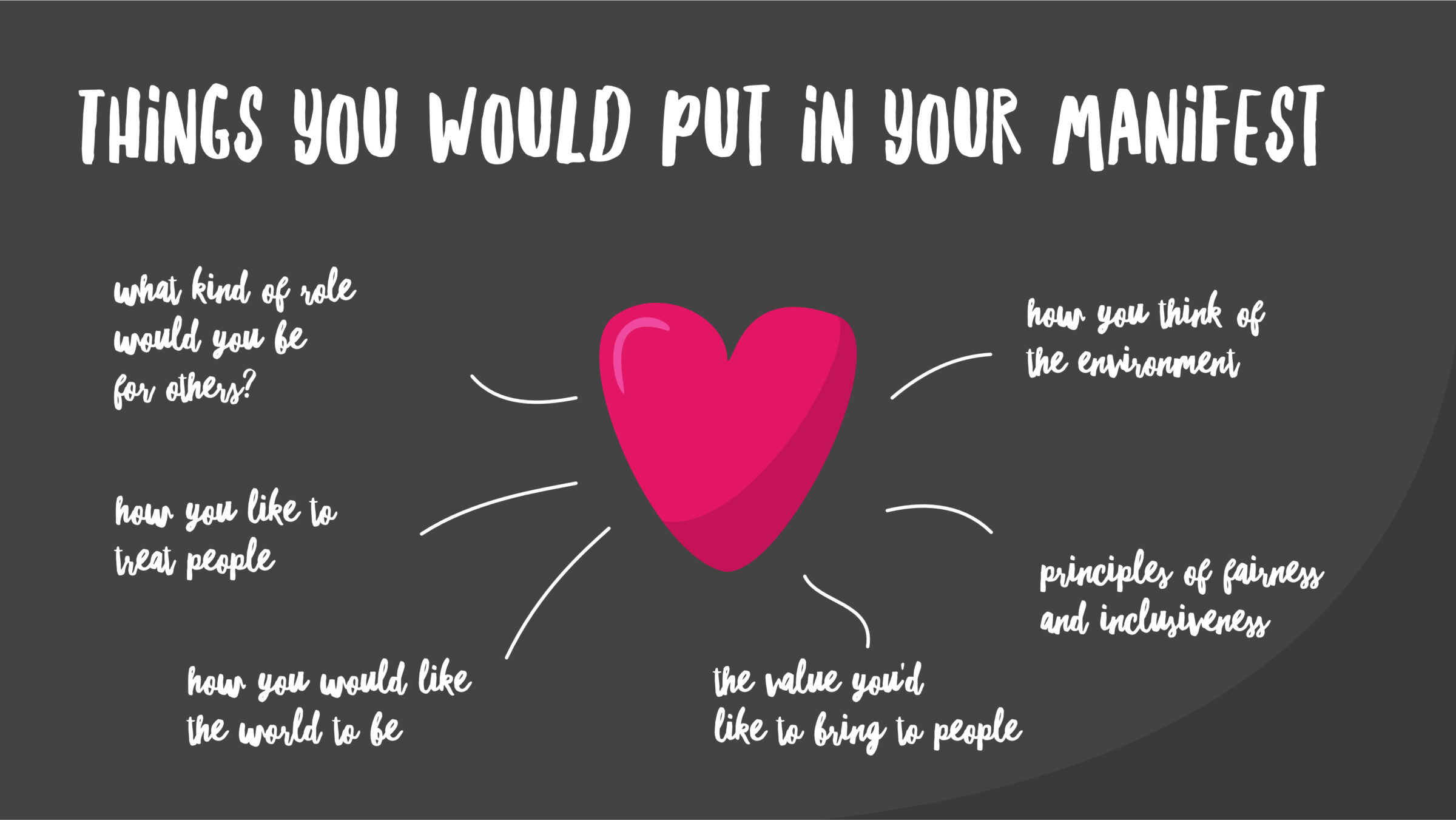
When people talk about what they believe in, what they find just and right, how they talk about what they find important, they put in a manifest. It’s a powerful, short and digestible pamphlet that talks about how you see the world, how you see yourself in that world, and what you want to do to make it better, to make people happier, or to help reach common goals.
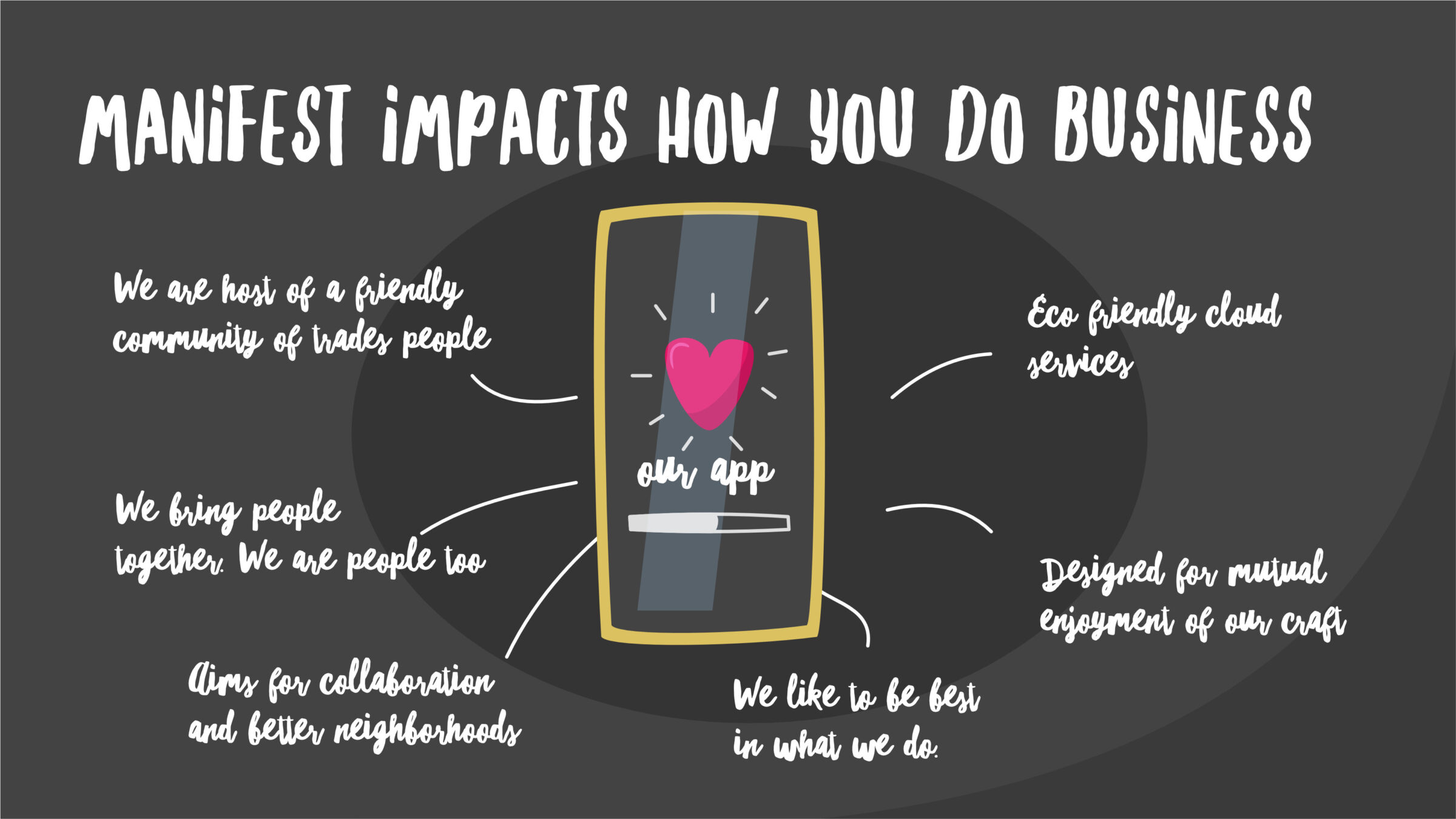
Such a manifest will impact how you do business, now and in the future and how you want to distinguish yourself towards customers, partners and employees. You should be able to see the manifest in everything you do, without ever reading it. However, such a manifest is always valuable to maintain and hone your identity.
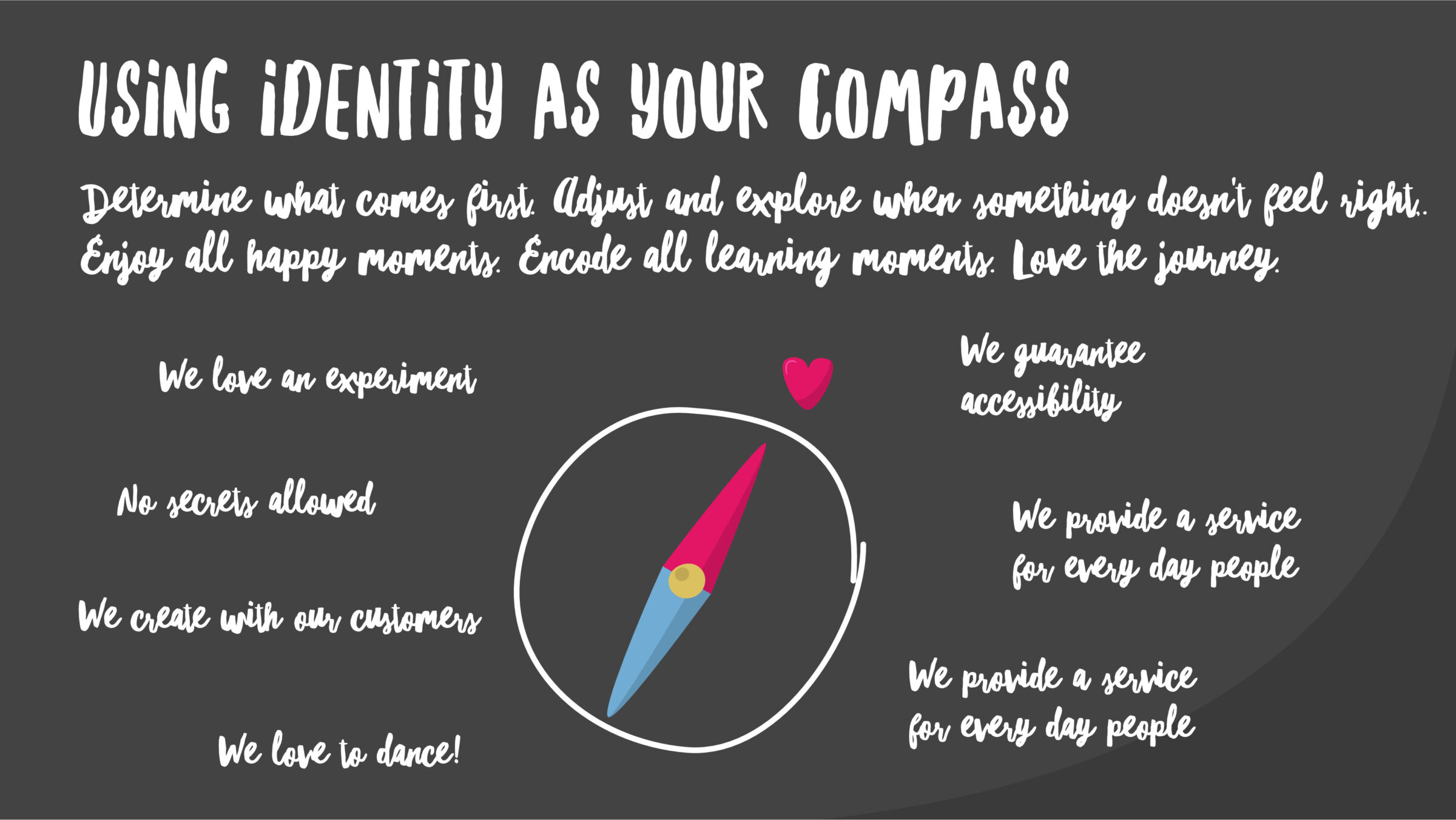
With that identity you can shape and improve your current business and ventures and you can use it as a compass to be a better version in the future. With that compass you can determine where you want to be and also why. Most importantly: you can infuse others with a sense of self. It creates agency among your employees, customers and partners. It makes choices self evident and accountable.
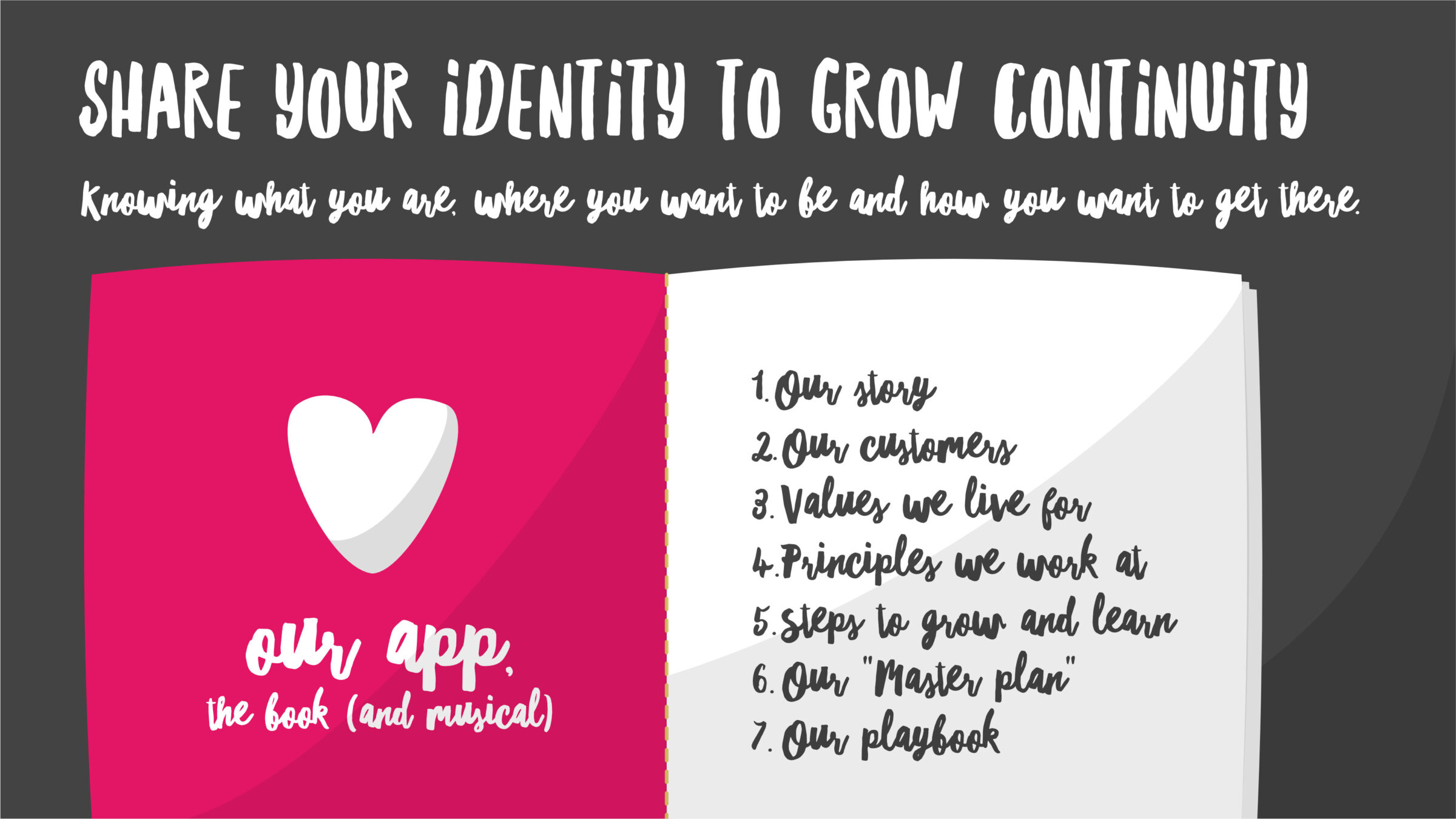
That’s why it’s important to regularly, or constantly ‘sing’ the identity song. Make it tangible, so you can both infuse the shared values and personality into the organisation, but also discuss and grow your shared identity, so it serves you now, but also the future you. It helps to celebrate the things you accomplished and the things still on your wish list, for the future.

With a defined identity you can finally project desirable destinations for your company. The things you can wish for and can put plans into action to get there. Evaluate this wishion constellation every now and then to keep you on track.
